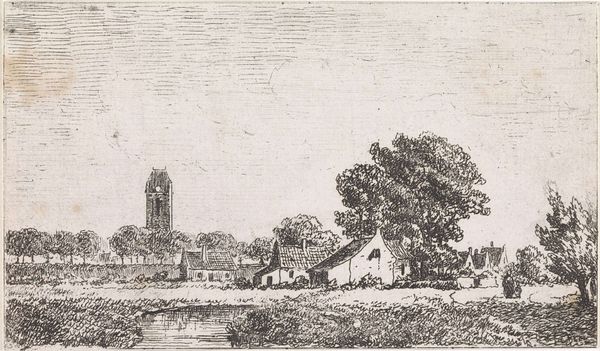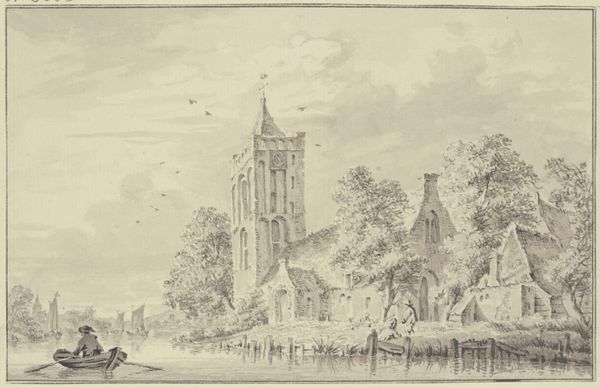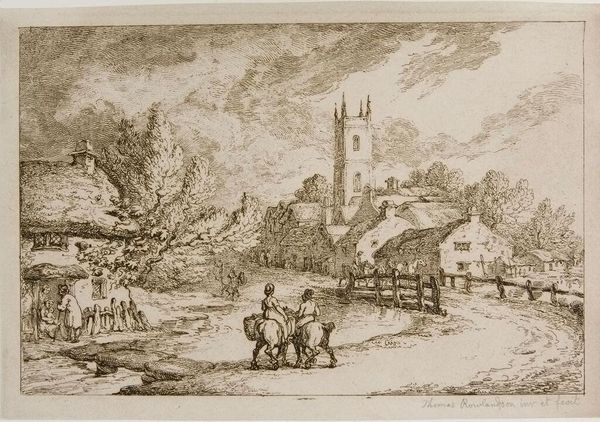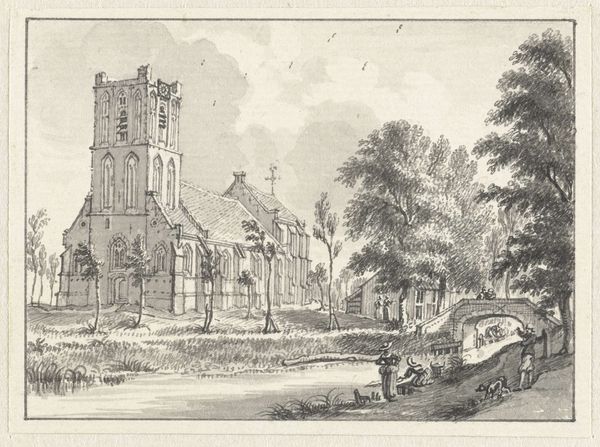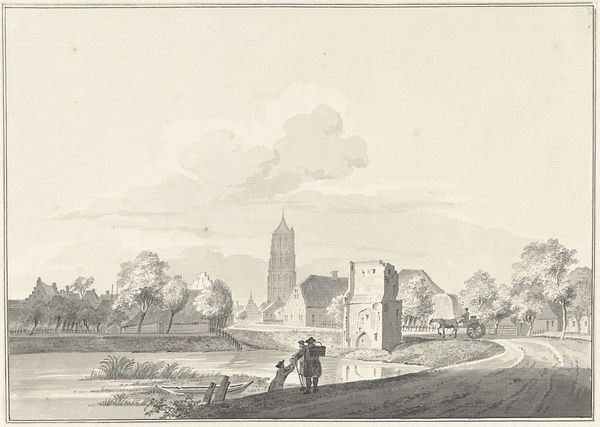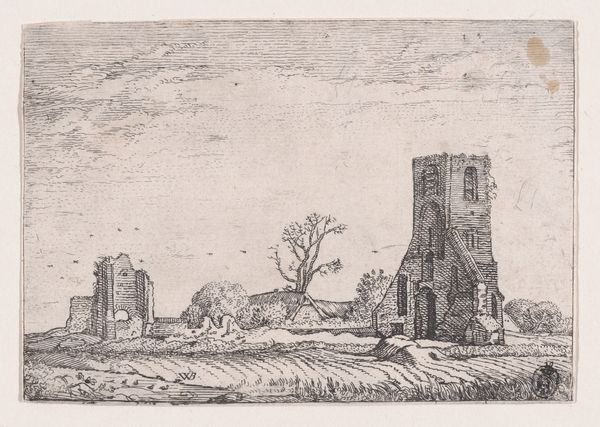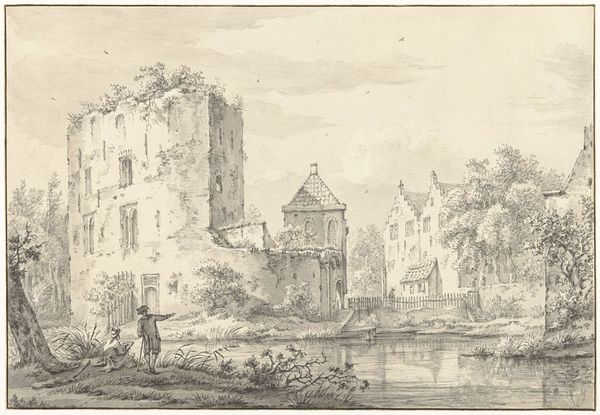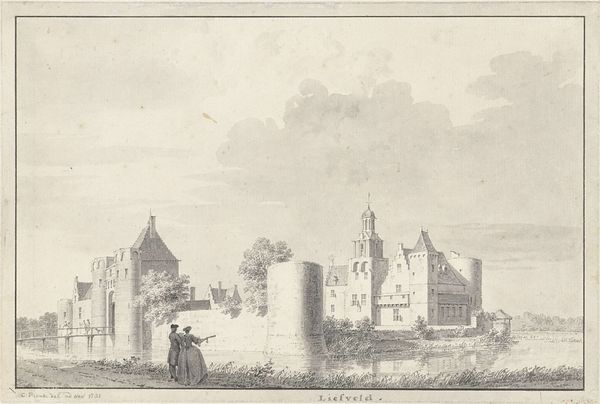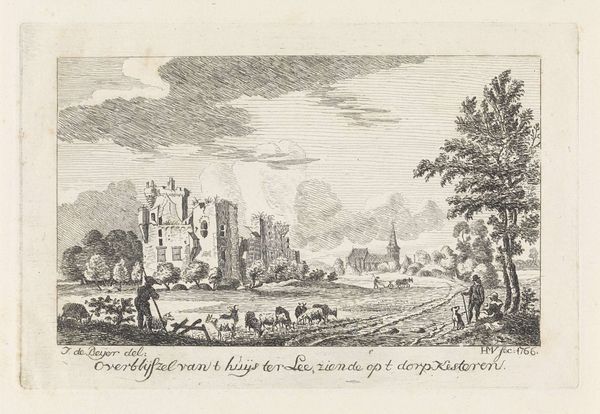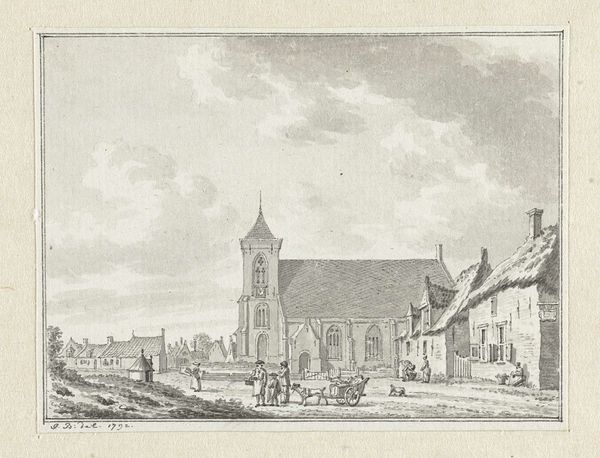
drawing, etching, ink, engraving
#
drawing
#
dutch-golden-age
#
etching
#
landscape
#
ink
#
cityscape
#
engraving
Dimensions: height 103 mm, width 158 mm
Copyright: Rijks Museum: Open Domain
Editor: Here we have "Huis ter Kleef, bij Haarlem," made with etching, engraving, and ink on paper sometime between 1612 and 1652 by Claes Jansz. Visscher. The image seems to contrast ruins with signs of daily life. What stands out to you about this piece? Curator: It's that very juxtaposition that speaks volumes, isn't it? Look closely at those ruins of Huis ter Kleef. They’re not merely architectural details; they're remnants of power, of privilege, ravaged, likely by the Eighty Years’ War. Consider the running horse in the foreground. What does it suggest to you about freedom? Editor: It's definitely energetic, and unrestrained compared to the people traveling. Is it perhaps alluding to ideas of liberation, especially after such conflict? Curator: Precisely! And note the peasants in the field and along the road: they are tilling the land, going about their daily routines. This is very much about a shifting social landscape. Can art truly be separated from political life, especially when showing the juxtaposition of destroyed aristocracy next to flourishing lower-class citizens? Editor: So the ruin stands as a warning, but the daily life also symbolizes resilience. The piece reflects an environment that had been shaped by conflict, as well as themes of Dutch identity. Curator: Indeed! Visscher subtly critiques power structures while celebrating the persistence of the human spirit. Do you think Visscher had a preferred class to showcase? Editor: Hmm, possibly? His art reflects on how people rebuilt their society in a time of significant political change. Curator: I think we can see that clearly in his choices! It provides such a compelling window into Dutch society during the Golden Age. Editor: Absolutely, I'll never look at a landscape the same way! Thank you.
Comments
No comments
Be the first to comment and join the conversation on the ultimate creative platform.
